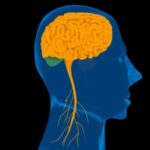 Strokes occur when the blood supply to the brain is disrupted through either blocked or burst arteries. This disturbance of oxygen and nutrients can cause brain cells to die and results in brain damage. In Australia, stroke is one of the primary causes of disability and the second most fatal condition behind coronary heart disease. Similarly, a transient ischaemic attack (TIA) or mini-stroke can occur, where blood to the brain is temporarily interrupted and can cause stroke-like symptoms. The difference is that mini-stroke will resolve anywhere from a few minutes to 24 hours.
Strokes occur when the blood supply to the brain is disrupted through either blocked or burst arteries. This disturbance of oxygen and nutrients can cause brain cells to die and results in brain damage. In Australia, stroke is one of the primary causes of disability and the second most fatal condition behind coronary heart disease. Similarly, a transient ischaemic attack (TIA) or mini-stroke can occur, where blood to the brain is temporarily interrupted and can cause stroke-like symptoms. The difference is that mini-stroke will resolve anywhere from a few minutes to 24 hours.
It widely thought that a mini-stroke greatly increases the risk of a stroke. Generally, risk of a stroke following a mini-stroke is assessed by a simple scoring method based on age, blood pressure, diabetic condition and symptoms caused from the mini-stroke. A recent and promising Canadian study has shown that a computed tomography (CT) scan within 24 hours of a mini-stroke can forecast the risk of further stroke and yield valuable information to guide prevention and treatment.
From October 2006 to April 2010, 2028 patients who had experienced a mini-stroke and received a CT scan within 24 hours were monitored by researchers. The results showed that 40% of these patients displayed changes due to blood restriction to the brain, indicative of recently damaged brain tissue. On follow-up, these patients had more than twice the risk of a subsequent stroke when compared with patients who did not show signs of damage. Additionally, patients were at 5 times the risk of stroke when displaying chronic signs of brain damage and 8 times the risk when showing narrowing of blood vessels. “All patients should get a CT scan of their brain after a TIA or non-disabling stroke. Images can help healthcare professionals identify patterns of damage associated with different levels of risk for a subsequent stroke or help predict when symptoms may get worse.” said Jeffrey Perry, senior author and associate professor of emergency medicine at the University of Ottawa in Canada.
One of the most significant known preventable risk factors for stroke is high blood pressure, or hypertension, as this can damage the walls of blood vessels. Other important lifestyle risk factors are high cholesterol, obesity, poor diet, lack of exercise, smoking and excessive alcohol consumption. My Rehab Team is comprised of various health professionals that can help guide you or your loved ones to develop and unique tailor structured lifestyle changes. If you would like to learn more about our services, please contact us on 1300MYREHAB (1300469794) or at info@myrehabteam.com.au.
Image courtesy of Colddesign @ http://www.freedigitalphotos.net/images/transparent-human-head-with-brain-photo-p189439 (Accessed 18th February, 2015)
[Online] http://strokefoundation.com.au/ (Accessed 20th Janaury, 2015)
[Online] http://www.univadis.co.uk/medical-news/287/Early-CT-scan-urged-for-mild-stroke?u=g7Nnk16ewgseZG%2B4W1juJf3WJnKOvJRYPVKIwTKQ6aF%2FksnnjS8%2FUlEbZgV%2FlV48&ll=eng-GB&utm_source=newsletter%20email&utm_medium=email&utm_campaign=medical%20updates%20-%20weekly&utm_content=50397&utm_term=automated_weekly (Accessed 20th Janaury, 2015)

